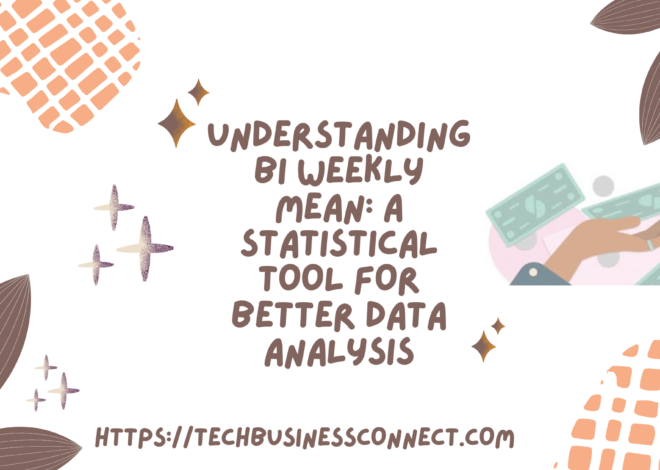
Embedded Value: The Best Understanding its Role in the Insurance Industry in 2024
Introduction to Embedded Value (EV)
Embedded Value (EV) is a crucial financial metric used primarily in the insurance industry to measure the consolidated value of an insurance company’s existing business. It is an actuarial valuation technique that provides a comprehensive picture of an insurance company’s value, incorporating both its current assets and the present value of future profits expected from its existing policies. Unlike traditional accounting measures, which may not fully capture the long-term profitability of an insurance company, embedded value provides a more nuanced understanding of an insurer’s economic worth.
Components of Embedded Value
Embedded value consists of two main components:
- Adjusted Net Asset Value (ANAV): This represents the net assets of the company, adjusted for certain items to reflect their economic value rather than their book value. It includes the shareholder’s equity, adjusted for items like unrealized capital gains or losses, intangible assets, and any other factors that might affect the true economic value of the assets.
- Value of In-Force Business (VIF): This is the present value of future profits expected from the current policies that are in force, after accounting for the costs of maintaining these policies. VIF includes the expected present value of future premiums, claims, expenses, and investment income, discounted at a risk-adjusted rate.
The embedded value is calculated as the sum of these two components:Embedded Value=ANAV+VIF\text{Embedded Value} = \text{ANAV} + \text{VIF}Embedded Value=ANAV+VIF
By capturing both the current net assets and the present value of future profits, embedded value provides a holistic view of the insurer’s value.
Why is Embedded Value Important?
Embedded value is crucial for several reasons:
- Performance Measurement: EV is an effective measure of an insurance company’s performance. It provides insights into how well the company is managing its current policies and how profitable these policies are expected to be. By focusing on future profitability, EV offers a forward-looking measure that can help assess the company’s long-term sustainability.
- Valuation and Comparisons: Embedded value is often used as a valuation tool. Investors and analysts use EV to assess the true economic worth of insurance companies. By comparing the EV of different insurers, stakeholders can make informed decisions about where to invest their capital. It also helps in comparing insurance companies with different accounting practices, as EV focuses on economic value rather than accounting profit.
- Management Tool: For internal purposes, embedded value serves as a management tool. It helps in decision-making regarding product development, pricing, and risk management. By understanding the embedded value of different products, management can focus on products that generate the most value and optimize the company’s portfolio.
- Transparency and Disclosure: Embedded value promotes transparency in the insurance industry. Many insurance companies disclose their EV calculations in their financial reports, providing stakeholders with a clear understanding of their business. This transparency builds trust and confidence among investors, policyholders, and regulators.
Calculating Embedded Value
The calculation of embedded value involves several steps:
- Determine Adjusted Net Asset Value (ANAV): This step involves identifying the net assets of the company and making adjustments to reflect their economic value. Adjustments may include unrealized capital gains or losses, intangible assets, and other items that may affect the true value of the assets.
- Project Future Cash Flows: The next step is to project the future cash flows from the in-force business. This involves estimating future premiums, claims, expenses, and investment income. The projections should be realistic and based on the company’s experience and market conditions.
- Discount Future Cash Flows: The projected cash flows are then discounted to their present value using a risk-adjusted discount rate. The discount rate reflects the time value of money and the risks associated with the future cash flows. A higher discount rate is used for riskier cash flows, reducing their present value.
- Calculate Value of In-Force Business (VIF): The present value of the projected cash flows gives the value of the in-force business. This is calculated by summing the discounted cash flows over the expected duration of the policies.
- Sum ANAV and VIF: Finally, the embedded value is calculated by adding the adjusted net asset value to the value of the in-force business.
EV=ANAV+VIF\text{EV} = \text{ANAV} + \text{VIF}EV=ANAV+VIF
Factors Affecting Embedded Value
Several factors can influence the embedded value of an insurance company:
- Interest Rates: Changes in interest rates can significantly impact the value of in-force business. Higher interest rates can increase the present value of future profits by reducing the discount rate, while lower interest rates have the opposite effect.
- Lapse Rates: The rate at which policyholders surrender their policies can affect EV. Higher lapse rates reduce future premiums and profits, decreasing the value of in-force business.
- Mortality and Morbidity Rates: Changes in mortality and morbidity assumptions can impact the projected claims and expenses, affecting the value of in-force business. For example, lower mortality rates in life insurance can increase future profits, while higher morbidity rates in health insurance can reduce profits.
- Expense Management: Efficient expense management can enhance embedded value by reducing the costs associated with maintaining policies. Companies that manage their expenses effectively can increase the profitability of their in-force business.
- Investment Performance: The performance of the company’s investment portfolio affects the investment income and, consequently, the embedded value. Strong investment performance can enhance the value of in-force business by increasing future investment income.
- Regulatory Changes: Regulatory changes can impact the assumptions used in EV calculations. For instance, changes in capital requirements or accounting standards can affect the adjusted net asset value or the value of in-force business.
Embedded Value Reporting Standards
The calculation and reporting of embedded value are subject to guidelines and standards to ensure consistency and comparability. The most widely recognized standards are the Market Consistent Embedded Value (MCEV) principles, developed by the European Insurance CFO Forum. MCEV aims to provide a consistent framework for calculating and reporting EV by using market-consistent assumptions and methods.
Under MCEV principles, the value of in-force business is calculated using market-consistent assumptions, which means that the assumptions used are aligned with current market conditions and observable market data. This includes using risk-free interest rates, market-consistent volatility assumptions, and other relevant factors. The aim is to provide a realistic and transparent measure of embedded value that reflects the economic realities of the business.
Challenges in Embedded Value Calculation
While embedded value is a valuable measure, it is not without its challenges:
- Assumption Sensitivity: Embedded value calculations are highly sensitive to assumptions, such as discount rates, lapse rates, mortality rates, and expense assumptions. Small changes in these assumptions can lead to significant variations in EV, making it important to use realistic and justifiable assumptions.
- Complexity: The calculation of embedded value can be complex, involving detailed actuarial models and projections. This complexity can make it difficult for stakeholders to fully understand the calculation and its implications.
- Subjectivity: Some elements of EV calculation, such as the choice of discount rate or assumptions about future expenses, involve a degree of subjectivity. This subjectivity can lead to variations in EV calculations across companies, reducing comparability.
- Market Volatility: Market fluctuations can affect the components of particularly the value of in-force business. During periods of market volatility, the EV can fluctuate significantly, making it challenging to use as a stable measure of value.
Conclusion
Embedded value is a critical measure in the insurance industry, providing insights into the economic value of an insurance company’s business. By considering both current net assets and the present value of future profits, EV offers a comprehensive view of an insurer’s value that traditional accounting measures may not capture. Despite its challenges, remains a valuable tool for performance measurement, valuation, and management decision-making.
As the insurance industry continues to evolve, embedded value will likely play an increasingly important role in providing transparency and insight into the true value of insurance companies. By adhering to standards like MCEV and using realistic assumptions, insurers can provide a clear and reliable measure of their economic value, helping to build trust and confidence among investors, policyholders, and other stakeholders.


